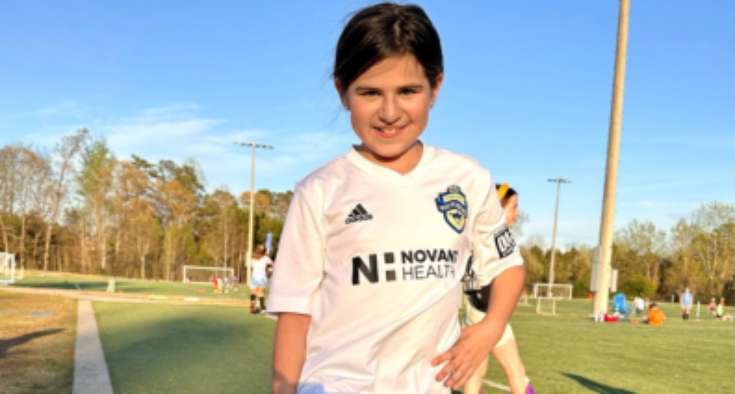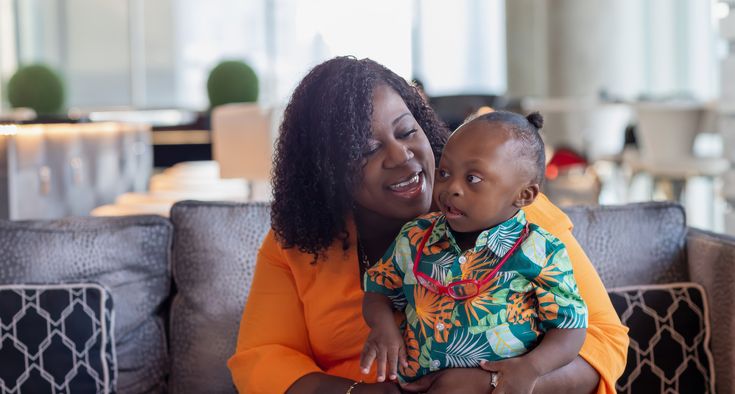You might not expect an abundance of smiles at a children’s cancer treatment clinic. But new play areas are giving the youngest cancer patients reason for excitement at the refurbished St. Jude Affiliate Clinic at Novant Health Hemby Children’s Hospital in Charlotte.
The idea behind the redesign was simple: Make the clinic look and feel less like a clinic. The renovated space does that and more. Recent improvements have created warmer, more welcoming surroundings for pediatric patients, featuring overstuffed chairs and an expanded family kitchen.
The clinic is the only St. Jude affiliate clinic in the Carolinas. In addition to participating in clinical trials conducted by St. Jude Children's Research Hospital, the clinic is also a member of Children's Oncology Group, providing access to more clinical trials.

It is also one of only three affiliates in the country participating in clinical trial research with St. Jude Children’s Research Hospital and the Children’s Oncology Group. Trials include a study of the soft tissue cancer rhabdomyosarcoma, which affects more children than adults.
Additional labs and exam rooms are already improving multidisciplinary care for physicians and nurses, said clinic co-medical director Dr. Jessica Bell. She walks us through five of the biggest improvements her team is celebrating.
Access leading cancer care for children and teens.
5 new enhancements to the Charlotte St. Jude Affiliate Clinic
1. More comfortable care
The most immediate impact of this space is the ambiance, and the comfort it offers families. We don’t want our patients to feel like they’re coming to a clinic, because there’s a perception that this could be a very somber environment. But the space concept is a gorgeous rainforest canopy.
We talk about “white-coat hypertension;” we don’t want the children to see us wearing those white coats. That can make them anxious, which impedes our ability to assess them and deliver care effectively. Health care tends to be a bit dehumanizing, as if you’re under a microscope. And so the design was very intentional: We wanted the whole place to feel like a play area. Laughter is literally everywhere, in both one-on-one interactions and in the hallways.
2. Better flow for patients and staff

Behind the scenes, our staff does a lot of communicating and coordinating to make things go as smoothly as possible for our patients and families. By combining two nursing stations, we now have a seamless connection to the medication lab and chemo prep area, and this layout brings everybody together. It also improves patient safety because nurses and physicians are now working side-by-side.
A new lab station now enables us to operate a blood count machine on both floors of the building, which means getting test results within minutes and minimizing wait times.
3. Additional amenities
We prioritized the design with the understanding that families might have to be here for hours, and sometimes unexpectedly.
We thought: What will make that experience safer and more comfortable? So our exam rooms now have overstuffed reclining chairs for patients and parents. In addition to the two new play areas, our therapy rooms offer pet therapy and group classes.
Our newly expanded family kitchen is promoting healthy lifestyles and choices—we know those patterns begin in early childhood, not in late adulthood. There’s also lots of small touches, like a blanket warmer, which can make patients far more comfortable during chemo.
4. Deeper education around nutrition
A grant is helping us to offer group classes and bring in fresh food for families to choose from. That means working with our nutritionists to build healthier habits and address family concerns.
Part of that involves incorporating options like vegetables and low-sugar juices. Something as simple as having a family kitchen and a nutritionist makes a big difference in long-term outcomes and mortality.
5. An expanded focus on survivorship
We believe survivorship starts during therapy, not afterward. Over time, we have come to realize that treatment and supportive care were so focused on a cure that we were not helping families prepare for the impact of long-term side effects.
Compared to their siblings, pediatric cancer survivors are at higher risk of many chronic conditions as they become adults. This means the risk of mortality can catch up to them in their fourth or fifth decades. Through research and clinical trials, we’re working to be more intentional about finding the most effective treatments and ultimately a cure.











